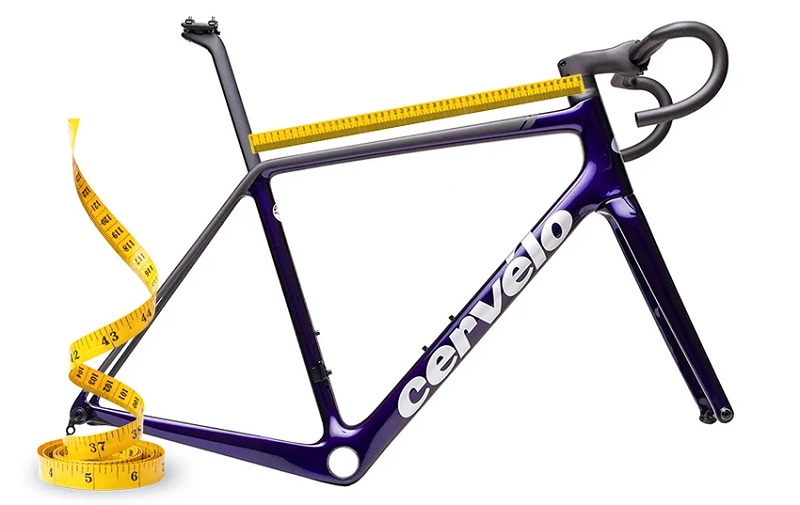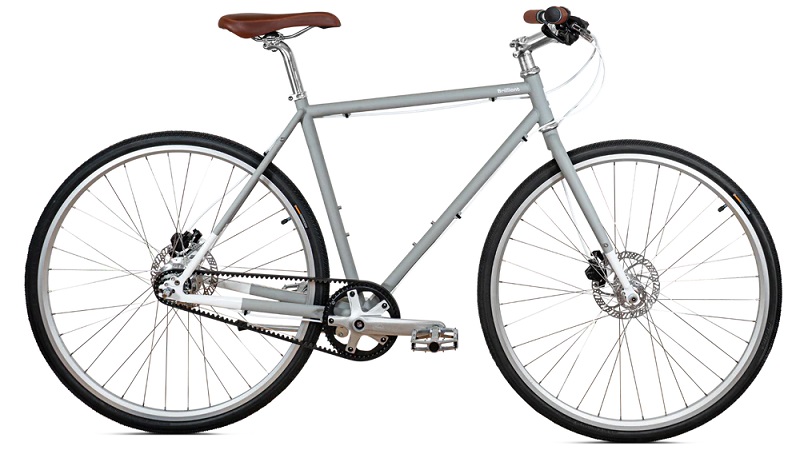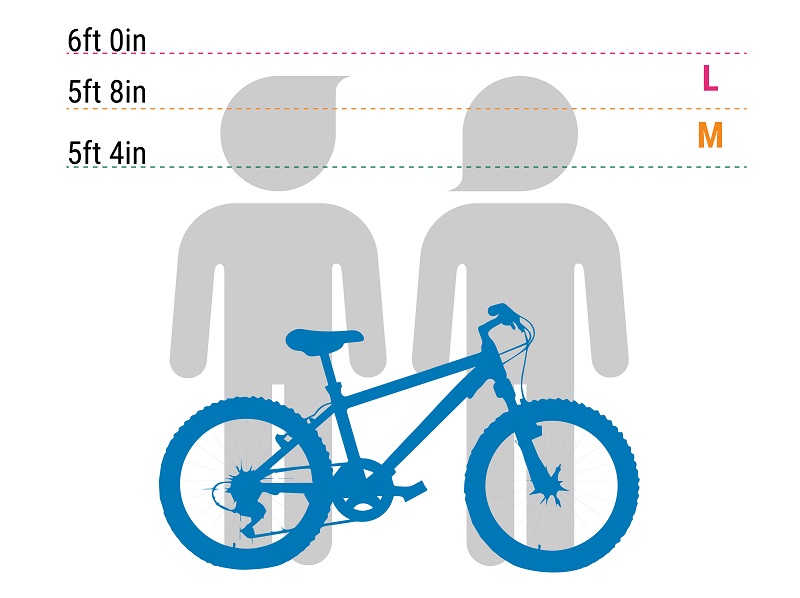Guidance
Road Bike Frame Size Chart & Fit Guide
When it comes to road cycling, one of the most critical factors influencing your performance and comfort is your bike’s frame size. The right frame size ensures that you can maximize your efficiency on the road while minimizing the risk of discomfort and injury. In this comprehensive guide, HookBike will delve deep into the world of Road Bike Frame Size Chart, helping you find the perfect fit for your cycling adventures.
Understanding the Significance of Proper Road Bike Frame Sizing
Before we dive into the nitty-gritty details of road bike frame sizing, it’s crucial to understand why it matters. A correctly sized frame can make a world of difference in your cycling experience, impacting factors such as:
Comfort
Riding a road bike that’s too small or too large can lead to discomfort during long rides. An ill-fitting frame can cause back pain, shoulder strain, and even numbness in your hands.
Efficiency
An optimally sized frame allows for a more aerodynamic riding position, reducing wind resistance and enabling you to ride faster with less effort. This efficiency boost can be a game-changer, especially if you’re a competitive cyclist.
Control
Proper frame size ensures that you have better control over your bike, enhancing your ability to handle it in various riding conditions. This is particularly crucial when navigating challenging terrains or making quick maneuvers.
Injury Prevention
An incorrectly sized frame can lead to overuse injuries, as it can force your body into unnatural positions. Choosing the right size can significantly reduce the risk of injuries such as knee pain, lower back pain, and wrist strain.

The Road Bike Frame Size Chart: Your Ultimate Tool
Road bike frame size charts can vary slightly between manufacturers, but I can provide you with a general guideline based on commonly used size categories and their corresponding rider heights. Keep in mind that these are approximate recommendations, and the best way to determine your ideal frame size is to consult the specific size chart provided by the manufacturer of the bike you’re interested in. Here’s a general road bike frame size chart:
| Frame Size | Rider Height Range |
| XXS | Below 5’0″ (152 cm) |
| XS | 5’0″ – 5’3″ (152 – 160 cm) |
| S | 5’3″ – 5’6″ (160 – 168 cm) |
| M | 5’6″ – 5’9″ (168 – 175 cm) |
| ML | 5’9″ – 5’11” (175 – 180 cm) |
| L | 5’11” – 6’1″ (180 – 185 cm) |
| XL | 6’1″ – 6’4″ (185 – 193 cm) |
| XXL | Above 6’4″ (193+ cm) |
Please note that these size categories are just a starting point, and within each size category, there may be variations in frame geometry and design. Additionally, the best fit may also depend on your body proportions and personal preferences for riding style.
It’s highly recommended to consult the size chart provided by the specific bike manufacturer you are interested in, as they may have their own sizing recommendations and measurements in centimeters or inches. Furthermore, consider visiting a local bike shop or working with a professional bike fitter for personalized guidance to ensure you get the right frame size for your needs.
See more: types of bicycle frames

How to Measure Your Road Bike Frame Size?
Now that we’ve established the importance of the right frame size, let’s walk you through the process of determining your ideal fit. Follow these steps to find your perfect road bike frame size:
Measure Your Inseam Length
Start by measuring your inseam length. This is the distance from the floor to your crotch while wearing cycling shoes. Use a sturdy tape measure for accuracy.
Consult a Road Bike Size Chart
Different bike manufacturers may have slightly different sizing recommendations, so it’s essential to consult the specific size chart provided by the brand of your choice. These charts typically relate your inseam length to a recommended frame size.
Consider Your Riding Style
Your riding style and goals also play a role in selecting the right frame size. If you’re into long-distance rides, you might prefer a slightly larger frame for added comfort. Conversely, if you’re focused on speed and agility, a slightly smaller frame may be ideal.
Test Ride (If Possible)
Whenever possible, test ride the bike you’re interested in to get a feel for how it handles. This hands-on experience can provide valuable insights into whether the frame size suits your preferences and riding style.

Common Road Bike Frame Sizing Methods
Different bike manufacturers may use varying sizing methods, but there are two primary systems you’ll encounter:
Traditional Sizing (cm)
In the traditional sizing system, road bike frames are typically measured in centimeters, referring to the length of the seat tube. A 56cm frame, for example, has a seat tube length of 56 centimeters. This method is straightforward and widely used.
Compact Sizing (S, M, L)
Some manufacturers use a compact sizing system that categorizes frames into small (S), medium (M), and large (L). This approach simplifies the process, making it easier for cyclists to choose a size based on their height and riding style.
Fine-Tuning Your Road Bike Fit
Finding the right frame size is just the beginning. Achieving the perfect fit also involves adjusting various components of your road bike. Here are some additional factors to consider:
Saddle Height
Adjusting your saddle height is crucial for comfort and efficiency. Your leg should be almost fully extended at the bottom of the pedal stroke, with a slight bend in your knee.
Handlebar Height
Experiment with handlebar height to find the position that feels most comfortable. This can help alleviate strain on your back and neck.
Stem Length
The length of your stem can affect your riding posture and control. It’s worth testing different stem lengths to see which one suits you best.
Reach
The reach refers to the horizontal distance from the saddle to the handlebars. It should allow for a comfortable and aerodynamic riding position.
See more: What size person fits a 54cm bike?

Expert Tips for Frame Size Selection
As seasoned cyclists and experts in the field, we’ve gathered some additional tips to help you make the most informed decision when choosing your road bike frame size:
Prioritize Comfort
While speed and performance are essential, don’t overlook comfort. A slightly larger frame can make long rides more enjoyable and less strenuous on your body.
Seek Professional Guidance
If you’re uncertain about your ideal frame size or how to make adjustments, consider consulting a professional bike fitter. They can provide personalized recommendations based on your unique physiology and riding style.
Test Different Models
Don’t limit yourself to a single bike model. Test a variety of options to find the one that truly feels like an extension of yourself.
Keep Your Goals in Mind
Think about your cycling goals. Are you training for a specific race, planning a long-distance tour, or simply enjoying leisurely rides? Your frame size should align with your objectives.
Conclusion
In the world of road cycling, achieving the perfect frame size is akin to finding the missing piece of a puzzle. It’s the key to unlocking comfort, efficiency, and control during your rides. Remember that your road bike should complement your unique physiology and riding style.
With the guidance provided in this comprehensive guide and the assistance of our Road Bike Frame Size Chart & Fit Guide, you’re well-equipped to embark on your journey towards the ideal road bike frame size. Whether you’re a seasoned cyclist or a beginner, prioritizing the perfect fit will undoubtedly elevate your cycling experience to new heights.
So, go ahead, gear up, and hit the open road with the confidence that comes from knowing you’re riding in the perfect-sized frame for you.

